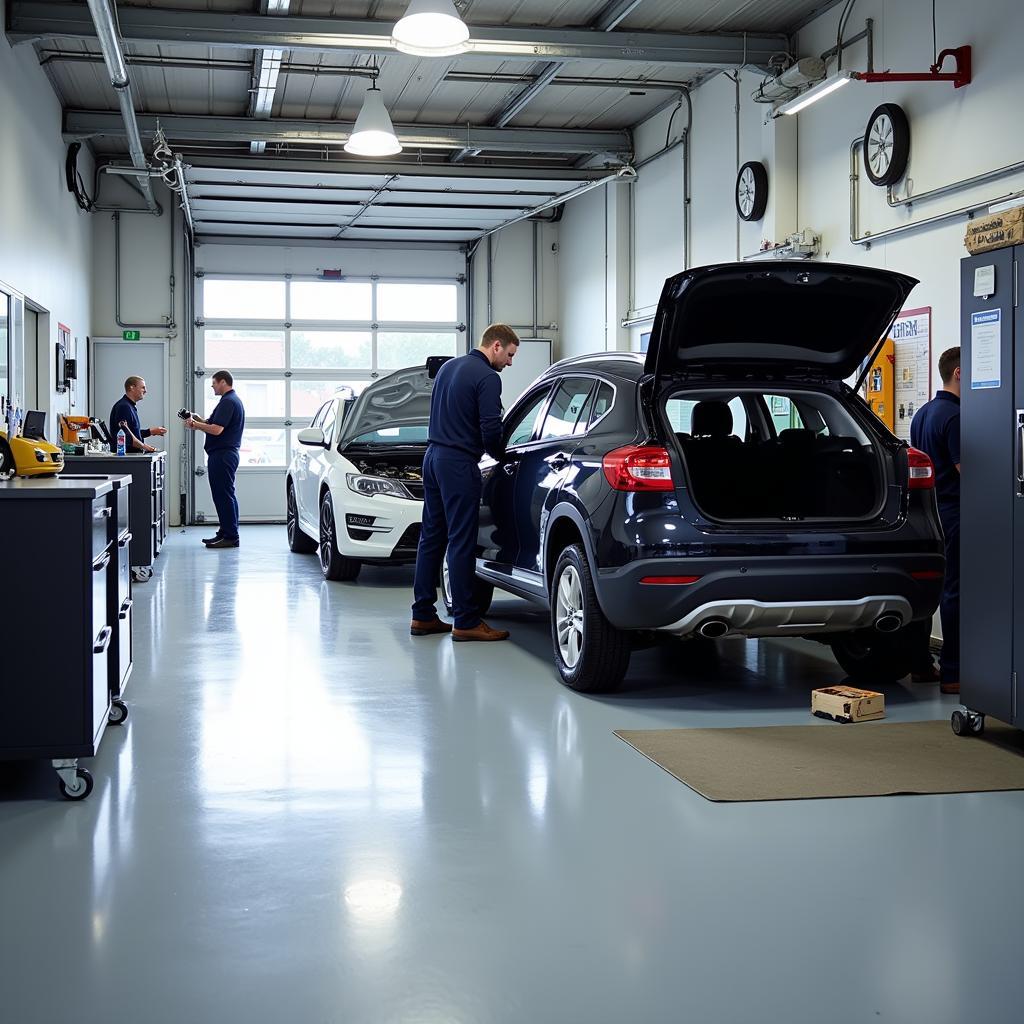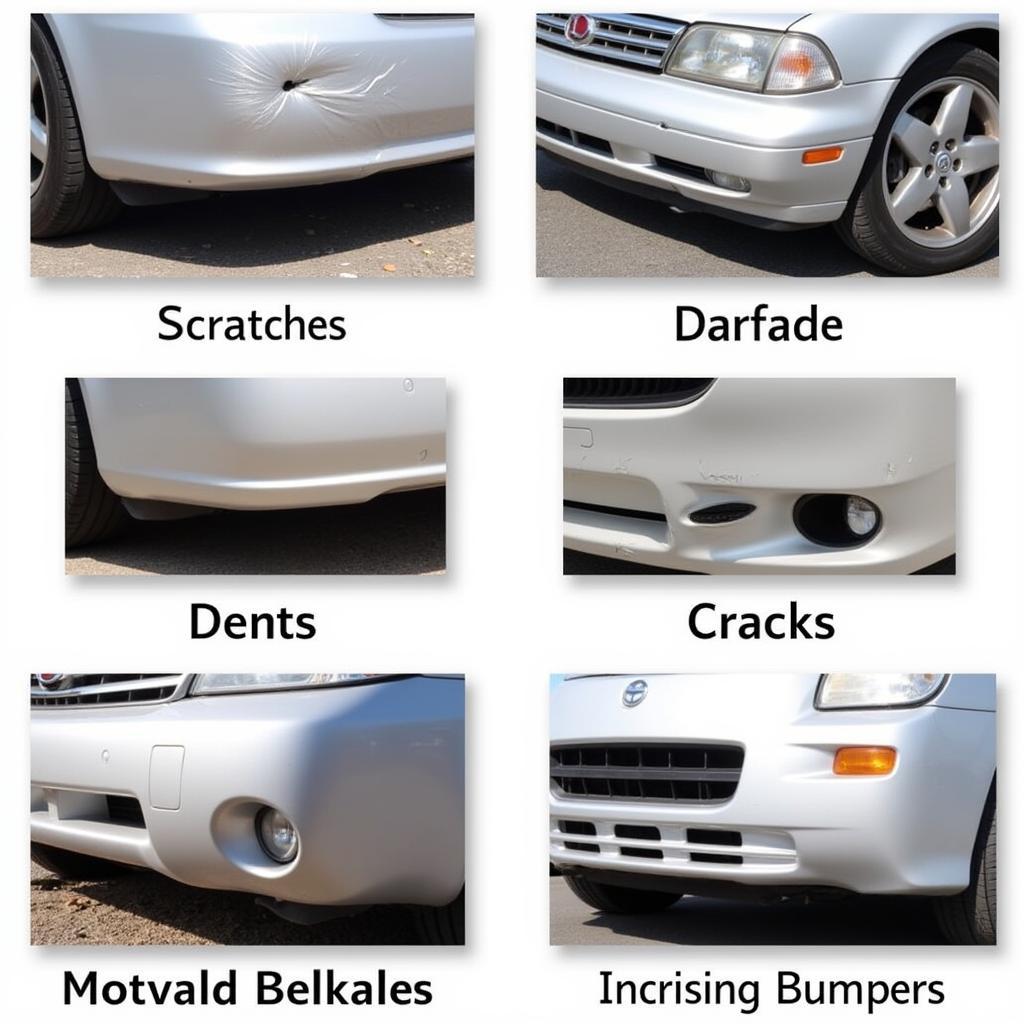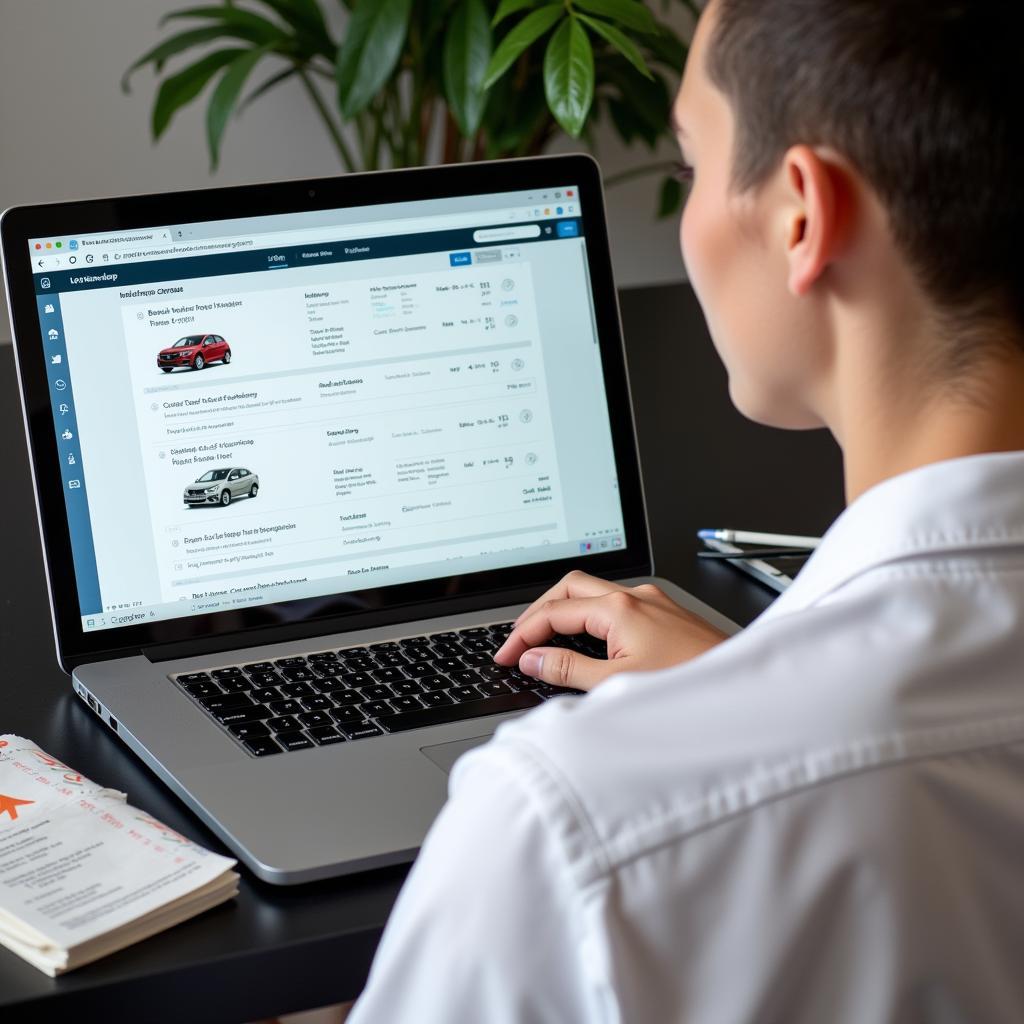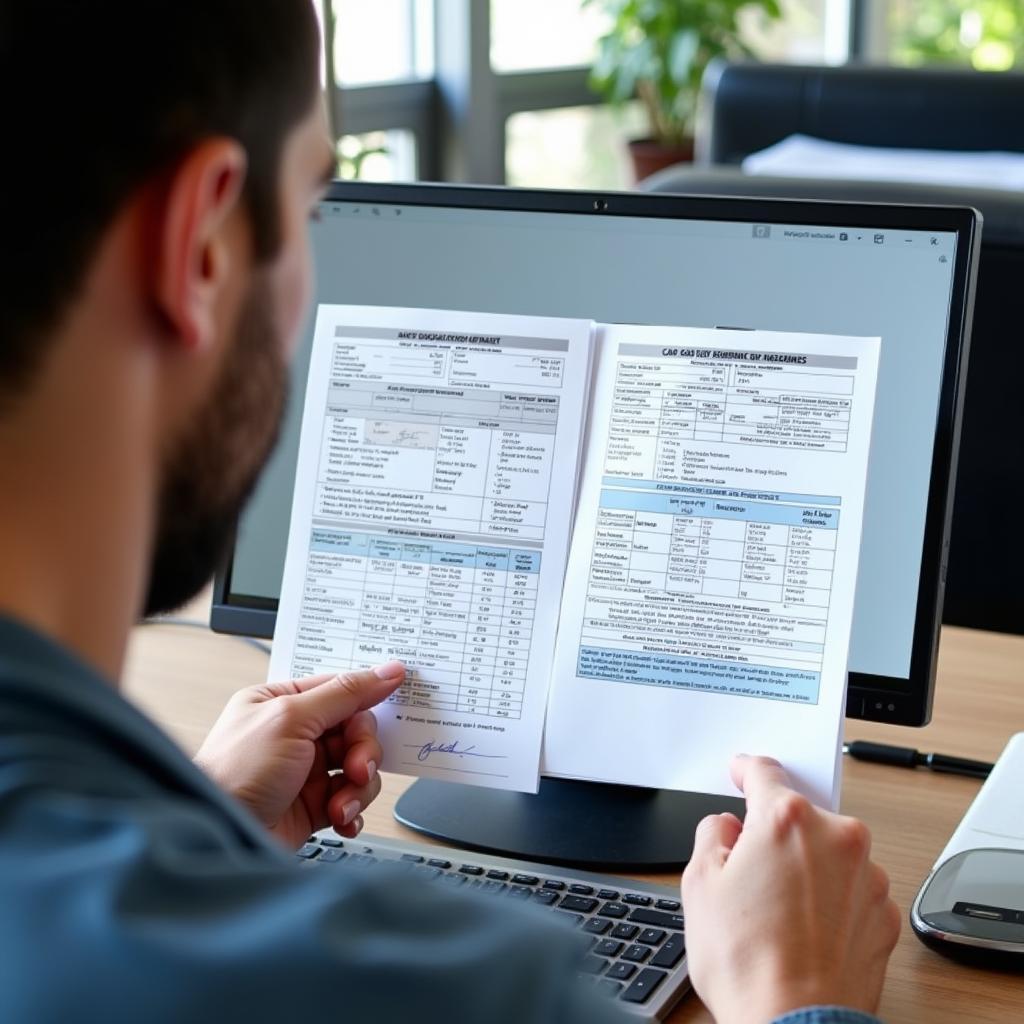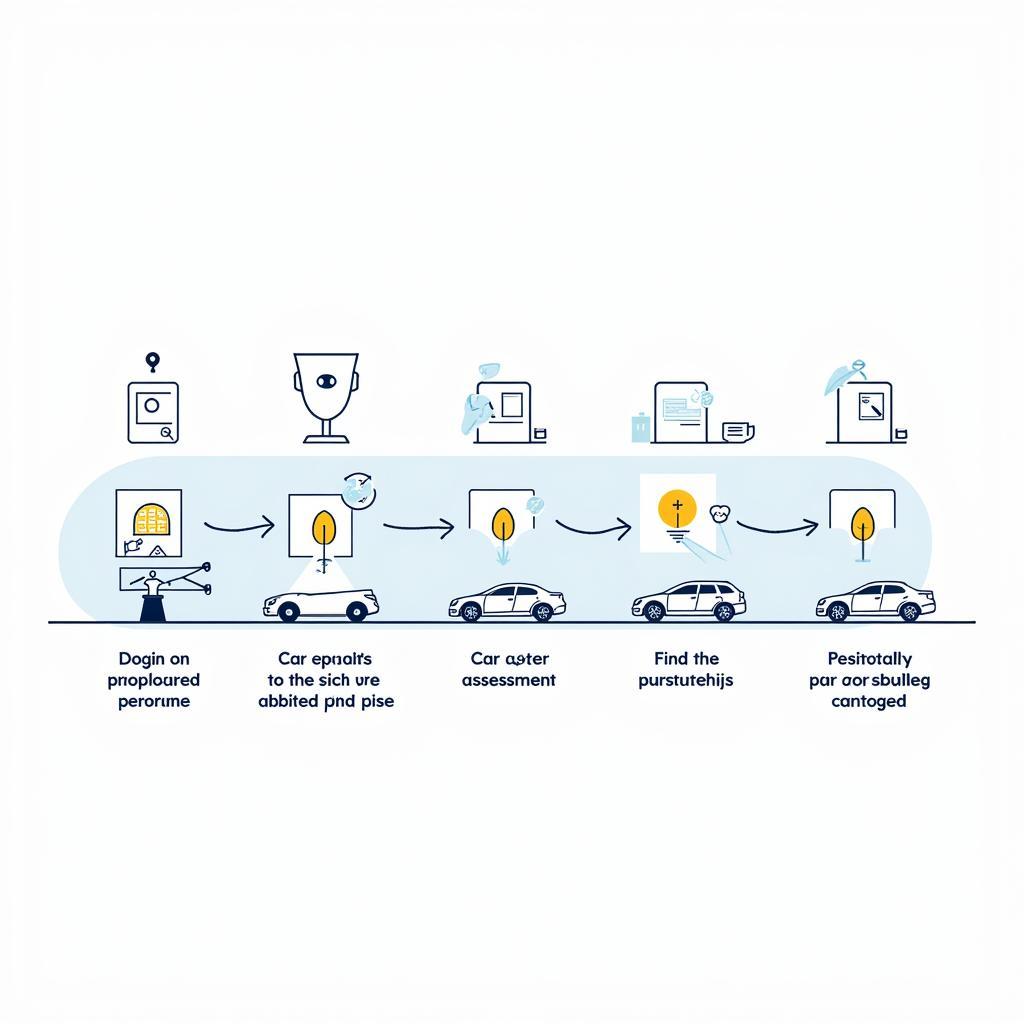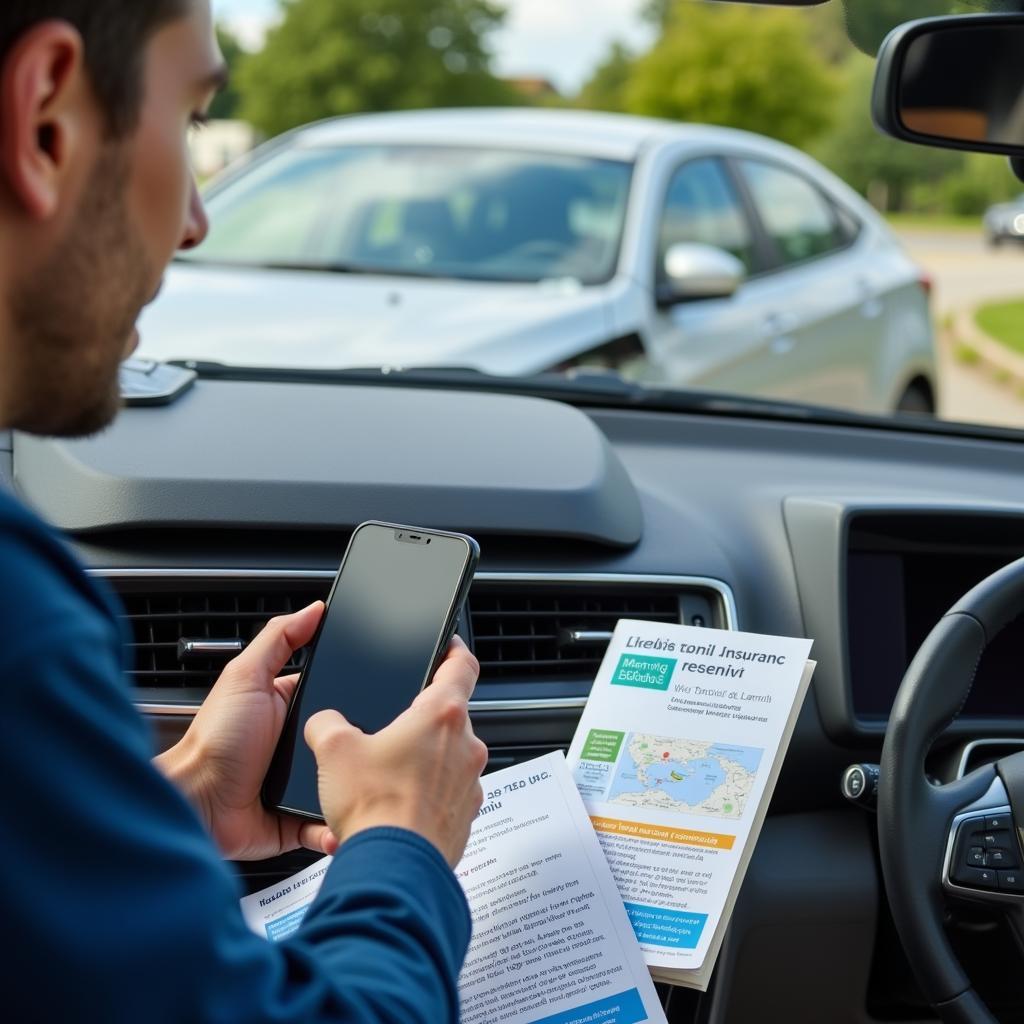Getting into a fender bender is never fun, and often, your car bumper bears the brunt of the impact. Minor bumper damage might seem purely cosmetic, but even small cracks can worsen over time and lead to costly repairs. Fortunately, there are ways to repair your car bumper yourself and save some money in the process. This guide will walk you through everything you need to know, from assessing the damage to achieving a professional-looking finish.
Assessing the Damage: Is a DIY Bumper Repair Possible?
Before you grab your toolbox, it’s crucial to determine if your car bumper can be repaired at home. Small cracks, dents, and scratches on plastic bumpers are often DIY-friendly. However, significant damage with deep punctures, extensive tearing, or damage to the bumper’s structural integrity is best left to professionals.
Gathering Your Bumper Repair Arsenal
Once you’ve determined the damage is repairable, it’s time to gather your supplies. Here’s a list of what you’ll need:
- Cleaning Supplies: Soap and water, rubbing alcohol, microfiber cloths
- Sandpaper: Variety of grits (e.g., 180, 320, 400)
- Body Filler (Bondo): For filling dents and cracks
- Plastic Bumper Repair Kit (if applicable): For plastic welding or bonding
- Primer: Specifically designed for plastic bumpers
- Automotive Paint: Matching your car’s color code
- Clear Coat: For protection and shine
- Masking Tape and Paper: For protecting surrounding areas
- Personal Protective Equipment: Gloves, safety glasses, and a respirator
Step-by-Step Guide to Car Bumper Repair
Now, let’s dive into the repair process:
-
Clean the Damaged Area: Thoroughly wash the bumper with soap and water, paying extra attention to the damaged area. Once dry, clean the area again with rubbing alcohol to remove any remaining grease or residue.
-
Sand the Damaged Area: Start with coarser grit sandpaper (around 180) to roughen up the surface and feather out the edges of the damage. Gradually move to finer grits (320, 400) until the surface is smooth and prepped for the next step.
-
Repairing Dents and Cracks: For dents, you might be able to use a heat gun or hairdryer to gently heat the plastic and pop it back out. For cracks and deeper imperfections, apply body filler (Bondo) according to the manufacturer’s instructions. Use a putty knife to spread the filler evenly and create a smooth surface. Let it dry completely.
-
Sanding the Body Filler: Once the body filler is dry, sand it down using progressively finer grits of sandpaper until it blends seamlessly with the surrounding bumper surface.
-
Priming the Repaired Area: Apply a thin, even coat of primer specifically designed for plastic bumpers. This helps the paint adhere properly and provides a uniform base. Allow the primer to dry completely.
-
Painting the Bumper: Using automotive paint that matches your car’s color code, apply thin, even coats to the repaired area. Follow the paint manufacturer’s instructions for drying time between coats. Typically, 2-3 coats are sufficient.
-
Applying Clear Coat: Once the final coat of paint is dry, apply 2-3 layers of clear coat to protect the paint and provide a glossy finish. Allow the clear coat to dry completely.
-
Final Touches: Once everything is completely dry, remove the masking tape and paper. You can use rubbing compound and polishing compound to buff out any imperfections and blend the repaired area with the rest of the bumper.
“I had a deep scratch on my rear bumper. Following these steps helped me restore it without breaking the bank!” – John S., Satisfied CarRepairOnline User
FAQs about Car Bumper Repair:
Q: Can I use any type of paint on my car bumper?
A: No, you should use automotive paint specifically designed for your car’s make and model. Your car’s color code can be found on a sticker inside the driver’s side door jamb.
Q: Can I repair a cracked bumper with superglue?
A: Superglue is not recommended for repairing car bumpers. It won’t hold up to the elements and can make professional repairs more difficult later on. Learn more about car bumper crack repair glue.
Q: My bumper has a small dent but no paint damage. Can I fix it without repainting?
A: You might be able to! If the dent is small and the plastic is flexible, you might be able to pop it out using heat. Check out this guide on repairing a dented car bumper using hot water.
Q: How much does it cost to have a professional repair a car bumper?
A: The cost of professional car bumper repair varies depending on the extent of the damage, your car’s make and model, and labor costs in your area. It can range from a few hundred dollars for minor repairs to over a thousand for major damage.
Don’t Let Bumper Damage Drive You Crazy!
Repairing your car bumper yourself can save you money and give you a sense of accomplishment. However, remember that patience and attention to detail are key to achieving professional-looking results. If you’re unsure about any part of the process or if the damage is extensive, it’s always best to consult a qualified auto body professional.
Need more specific guidance? Check out these other helpful resources on CarRepairOnline:
- Bumper Repair Smart Car 2011
- How to Repair Deep Scratch on Plastic Car Bumper
- Car Bumper Repair Sheffield
Still have questions about how to repair your car bumper? Don’t hesitate to reach out! Our team of car repair experts is here to help. Contact us via WhatsApp: +1(641)206-8880, Email: [email protected]. We’re available 24/7 to assist you with any car repair needs.

